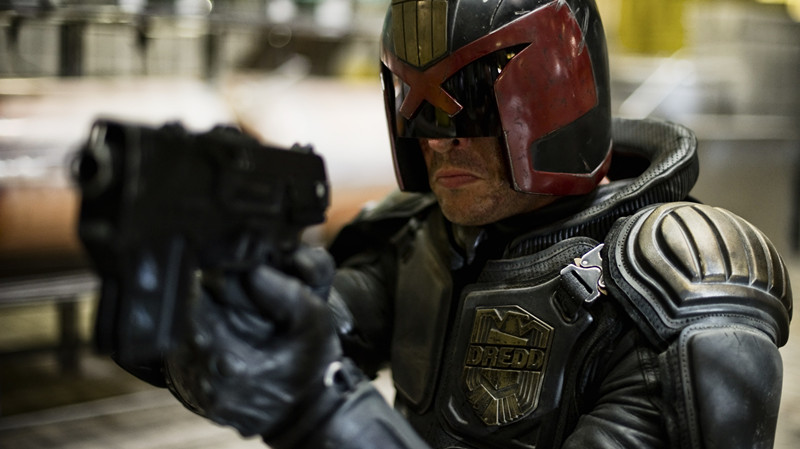
In Philadelphia in 1979, Sylvester Stallone sat down in a luxury hotel suite for an interview with Roger Ebert. The “Italian stallion” might have felt a little nervous since “Rocky II”, the sequel to his 1976 smash hit, was premiering that day.
The young star was only in his early 30s then, but had already felt the weight of public opinion against him after his previous two starring roles didn’t live up to the hype of his Oscar-winning film. It’s on this quiet afternoon, with one of the most esteemed film critics of our time, that he decided to blow off some steam.
“There is this one question, which when I hear it makes me very mad. They all ask me, Will ‘Rocky II’ save your career? Is this my comeback, they wanna know? Will it pull my career out of the toilet? I didn’t think I was doin’ so bad….” Culminating in a reflective misanthropy, he said, ”sometimes you get the feeling that people can’t wait for a film to flop. People love seeing dreams come true but like to see them getting crushed too.”
This has only become more apparent with the dominance of social media. Those disenchanted with pop culture can always find a comment section where they can voice their dissent. No matter how well-established a film may be, there’s always somebody out there who hates it. Nowadays, you can always find someone who agrees with you, no matter if you think that the “Star Wars” prequels are vastly superior to the original trilogy and that Jar Jar Binks is comedy gold (shudder).
Many film sites devote themselves to professional contrarians, those willing to go against popular opinion just to get some clickbait. People want to be original, but often times they have no clue how. So they start loving something that is universally panned, or hate something that is universally loved. Rarely is it ever balanced; people prefer things in black-and-white terms. It makes life much simpler.
On this list we will look at 10 films that were either commercial flops or ridiculed gleefully by the masses. Most of these were simply let down by expectation; the massive talent involved should have produced something better, but alas, it was not meant to be. Others were misunderstood, over-budgeted, mismarketed, and deserved better.
Hopefully these films will be granted another chance by the viewer. Maybe with another perspective they will be more appreciated, and maybe their redeeming qualities will shine through its various missteps.
10. John Carter
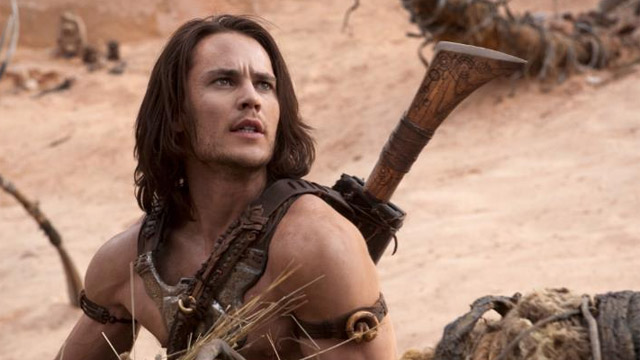
“The fantasy-romance adventures of a Civil War veteran transported to Mars made for a giant, suffocating doughy feast of boredom.”
– Peter Bradshaw, The Guardian
Disney’s most infamous flop, with an estimated loss of $84 million, has been receiving more love in the past few years. Though it contained too much weirdness at the time, with its mix of old-school swashbuckling and B-movie science-fiction elements, it does stand out among the rest of the bloated CGI fests of its time.
Compare this film to, let’s say “Batman v Superman: Dawn of Justice” or “X-Men: Apocalypse”, and you can see the difference between a labor of love and a boardroom full of studio heads pounding their calculators to exert the maximum profit.
“John Carter”, regardless if it came from a movie studio that isn’t known for taking chances (especially nowadays), is a film with huge ambition and a defining personality. It has a huge heart; not the fabricated sweetness that Disney churns out regularly, but one that came from a dreamer who gave it his all, director Andrew Stanton.
The history of “John Carter” included many failed attempts to get the classic Edgar Rice Burroughs book to the big screen. Originally, it was meant to be America’s first animated picture, with Robert Clampett (one of the great architects of the Looney Tunes franchise) courting Edgar Rice Burroughs to adapt the first of his Martian adventure series. Sadly, this fell through, with the test footage receiving negative feedback. It was simply too weird for its time.
Ray Harryhausen, the God of stop-motion animation, took an interest in its source material, but his version of Barsoom was never meant to be. In the 80s, it was meant to be a Tom Cruise vehicle with John McTiernan sitting in the director’s chair, but the special effects needed for the picture seemed too daunting.
Years passed and in the 21st century, the project passed through names like Robert Rodriguez, Kerry Conran, and Jon Favreau until the rights returned to the Burroughs estate. It would have stayed there were it not for Andrew Stanton, fresh from Pixar fame with films like “Finding Nemo” and “WALL-E”, who prompted Disney to take back the rights.
Taylor Kitsch would star as the titular hero, John Carter. Kitsch seemed destined for blockbuster fame, but with each commercial or critical failure, this destiny was short-lived. He does a fine job with the material, though admittedly, the greatness that his character is supposed to possess does not come through as it should.
Like Henry Cavill, who does a noble but flawed job in “Man of Steel”, Kitsch doesn’t have the presence of the likes of Christopher Reeve or Timothy Dalton, who can pull off such a mythical hero. It doesn’t matter how good-looking you are or how much time you spend in the gym, presence is something you are born with.
Reeve might have worn a cheesy suit compared to the current installment of Superman, but he still impresses more. There’s just something about him that IS Superman. A character like John Carter is supposed to be the stuff of legends, and though you are rooting for Kitsch, he doesn’t become anything more than your average Hollywood hero.
The film is told through a series of diary entries from John Carter that Edgar Rice Burroughs (played by Daryl Sabara) reads throughout the film. John Carter was a disillusioned cavalry fighter turned prospector who is arrested by Colonel Powell (played by a particularly hairy Bryan Cranston), who wants him to come back to the Army and fight the Apaches.
Carter has no interest for the cause of the South and prefers to prospect the illustrious ”spider cave of gold”, which supposedly holds hidden treasures. After encountering a bunch of Apache warriors while Carter is escaping the cavalry, John and Powell find themselves in this cave and encounter a mysterious figure, who John is forced to kill in self defense. It’s during his self defense that the medallion this figure was wearing transports him to the world of Mars, or as the natives call it, Barsoom.
John Carter becomes involved in a series of political conflicts in Barsoo, which includes Tars Tarkas (Willem Dafoe), who is leader of creatures known as the Tharks. In redemption to his earlier participation in the Cavalry war, Carter eventually joins the Tharks to reclaim their rightful place on Barsoom.
Besides the great casting – if a rather underwhelming lead – there’s a great sense of fun, humor, and warmth that presides over the film. It looks like a film that is rarely made nowadays; an adventure flick lacking the cynicism of New Hollywood, taking back some of the charm of Old Hollywood, and using contemporary special effects starring a host of great talent. Planned sequels will never see the light of the day but at least there is this film and the writings of Burroughs to continue the story.
9. Escape from L.A.
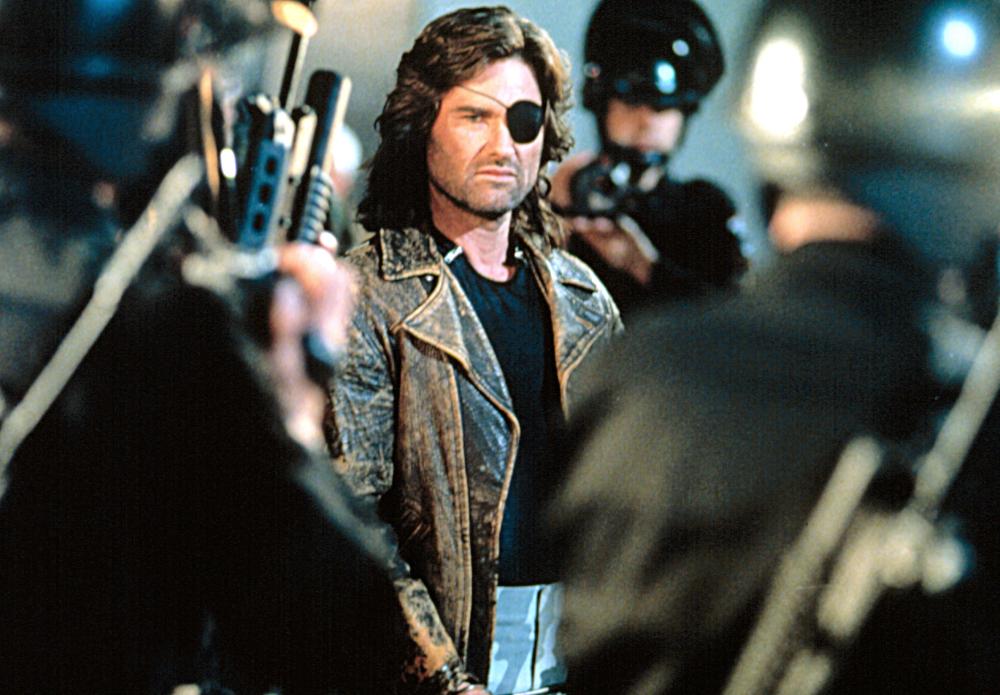
“Apart from a few good characters, this is really not up to scratch in most departments, especially the ludicrous plot.”
– Kim Newman, Empire
John Carpenter, while being renowned for making fun genre flicks, is also a social critic. The fact that he makes movies starring killers with white-painted William Shatner masks, or shapeshifting aliens, or ghostly pirates doesn’t change that. Many of his wonderfully silly movies have something interesting to say.
Carpenter, however, isn’t your typical left-wing Hollywood diva – he’s the underdog, the lone wolf, the outsider who somehow made it into Tinseltown. While his career was not focused on tackling social issues (first and foremost, he wanted to make entertaining movies), every now and then he can’t help himself, and in several of his films, there’s an indictment on society. There’s Snake Plissken sneering at the state of things.
The script for “Escape from New York” had been inspired by the Watergate scandal, as Carpenter saw the nation descend into even greater cynicism, inspired by their then-conniving commander-in-chief. That the film co-stars a selfish and oafish president (Donald Pleasence) who Snake has to save from the clutches of The Duke (Isaac Hayes) should be no surprise then.
The setting of a dystopian New York would be partly inspired by “Death Wish”, but only in its depiction as New York as a dangerous jungle, not in its core message of right-wing vigilantism. New York, at the time of its screenplay inception, was rampant with crime with all manner of thugs and hoodlums lurking in the shadows to rob old ladies from their purses; this was until Mayor Rudy Giuliani proclaimed himself to be a political Paul Kersey and took credit for its declining crime rate.
“Escape from New York” is one of the few commercial successes from Carpenter, as his films have a tendency to find their places in cult stardom. The insistence of a sequel, however, came mostly from its star, Kurt Russell, who considers Snake Plissken to be his favorite role.
However, this wasn’t enough to sway Carpenter, as he had no interest in a lame cash-in sequel. Snake had to be back for a reason; there needed to be a certain political undercurrent that would justify his return. It was in 1994, with the Northridge earthquake and the Los Angeles riots, when Carpenter found the inspiration he needed for the sequel and revived Snake onto the big screen in what would become “Escape from L.A.”
Much of the criticism is pointed to how similar it is to the original, and there’s some fairness to that claim. Like the original, Snake Plissken, a former war hero who turned to crime, is imprisoned and offered a presidential pardon if he agrees to a mission. In New York, he had to save the president and an important tape.
In L.A., the president himself asks him to save a remote control of a superweapon called the ”Sword of Damocles” while caring nothing for his daughter, who’s in the hands of a crazed revolutionary called Cuervo Jones.
Again, Snake is administered something that will kill him if he doesn’t complete his mission. The characters in “Escape from L.A.” are even similar, replacing the ones that came before. In “New York”, police commissioner Bob Hauk (Lee van Cleef) offers him the deal; in “L.A.”, Commander Malloy (Stacy Keach) approaches him. In “New York”, Snake encountered Cabbie (Ernest Borgnine) to help him on his quest; in “L.A.”, its Maps-of-the-Stars Eddy (Steve Buscemi); and so on.
The film is basically a remake, using the same formula but with a bigger budget and more fancy-pancy action set pieces. Reading this, you would think that Carpenter was simply lazy, just playing it safe and making some easy cash. What most people missed, however, was that Carpenter made a brilliant satire of America in the guise of a bloated and expensive Hollywood picture. This wasn’t just Snake’s return to the big screen – this was Carpenter mocking the madness that was rampaging his country.
It’s not even a big secret; the two main bad guys are Cuervo Jones (Georges Corraface), a guy dressed like Che Guevara, and the president (Cliff Robertson), an evangelical nutjob who turned America’s democracy into a theocracy. These are two very misguided extremists who are willing to enslave their fellow man for the “greater good.”
Los Angeles, both the glossy haven for the fortunate and a cesspool of broken dreams, has always been a perfect setting for satire and Carpenter naturally can’t help and take a few pot shots at the one place that made him famous. Not only does Hollywood get destroyed, but Los Angeles itself becomes a prison for every act of sinful pleasure, where people are exiled if they go against the new “moral” America.
None of these are products of the time; we still have Christian extremists in Democratic suits who, if they had their way, would turn America into the theocracy they’ve always dreamed about. The social commentary is as relevant now as it ever was, and you couldn’t say that about “Escape from New York”.
Aside from all this, the film is simply a lot of fun and never takes itself so seriously. Carpenter had a lot of fun with this film and considers it superior to the original.
From the hilariously bad special effects to the zany performances of Pam Grier as a transsexual gang leader, Buscemi as a treacherous guide, a cameo from the chin-king himself Bruce Campbell as an evil surgeon (mocking the plastic surgery obsession of LA), and even Peter Fonda as a groovy hippie surfing next to Russell in another one of its ridiculous set pieces.
Best of all, it has Russell playing the role he was born to play – the role that saved him from the kiddie fodder that seemed destined for him after he started his career with Disney. It has one of the best Carpenter endings (and that’s saying something, as the man has a knack for ending his films perfectly), with Snake calmly smoking a cigarette, looking into the camera, and uttering one of the best final lines of cinema history: ”Welcome to the human race.”
Welcome indeed.
8. The Postman
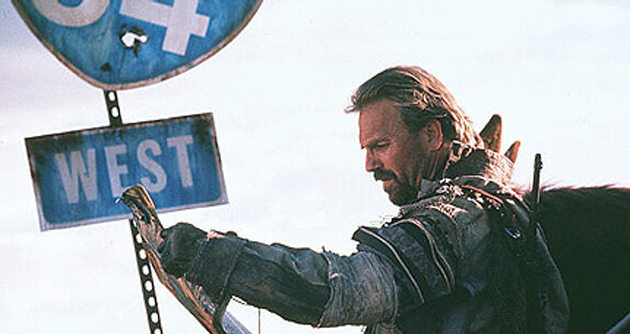
“It’s goofy, yes, and pretentious, and Kevin Costner puts himself in situations that get snickers. And it’s way too long.”
– Roger Ebert
One of the more controversial entries on this list is Kevin Costner’s snail-paced epic “The Postman”. Its many detractors have more than few fair points; they call this film pretentious (correct), they call this film overly long (correct), they call this the product of an narcissist (correct), and most of all, they call it dull (correct, at times). But it’s precisely these obvious flaws that make “The Postman” such a fascinating and sometimes unintentional humorous watch.
While “Dances with Wolves” was also a slow-burner and features a similar hero, it was also quite new for its time. In “Waterworld”, he plays a drifter after global warming covered the world in water. Again, he must save a group of people against some evil doers, this time a bunch of goofy pirates (led by scene stealer Dennis Hopper).
Many stars repeat familiar roles to their success, but in “The Postman”, Costner is just pushing it. It would have helped if the film was maybe 30 minutes shorter, if Costner had trimmed many of its goofy lines, and if Costner would have put a little more effort in his characterization; not to mention, if he had gotten rid of the Postman statue at the end, which also gave some unintentional laughs at the end of “The Dark Knight Rises”.
Based on David Brin’s award-winning novel, “The Postman” stars Costner as the unnamed (you guessed it) postman who traverses around an America that, after an unspecified apocalyptic event, has become the Old West again. Having retrieved a Postman outfit from a dead body in a mail truck, and assuming its identity, he lies to people that the government has been restored and uses his mail delivery services for food and shelter.
His appearances brings hope to the lives of people, and he becomes a symbol for order in a world run by chaos. Soon enough, his appearance spawns a myth as several people dress up as postal carriers to continue his legacy. However, the Holnists, a dangerous militia led by General Bethlehem (Will Patton), sees this as an affront to their authority and takes action against this Postman and his legion of followers.
Much of the unintentional comedy lies in its overblown sincerity, to the point where it almost becomes a satire. The way people become suddenly obsessed with the Postman, the insane amount of times the words “the Postman” are repeated, with infamous lines like ”how much mail can a dead Postman deliver?” or “That’s the difference between you and me. You don’t believe in anything,” to which the Postman replies ”I believe in the United States.’’
“The Postman” should be viewed as a testament to Costner’s ego, who, like many great filmmakers before and after them, sometimes need people around him questioning his choices. And though it can be slow and dull, it’s in its completely unaware comedy that the film deserves another chance (and you can always do some chores if it gets too boring).
7. The Wolfman
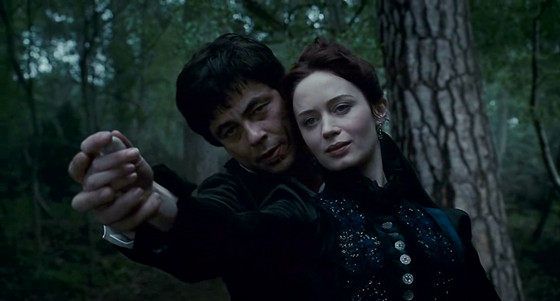
“Del Toro looks about as dangerous as an urban fox snoozing in a compost bin, and Blunt seems to be suffering from some residual Victorian queenliness.”
– Peter Bradshaw, The Guardian
“The Wolfman”, from 2010, has been largely forgotten, and its mixed reviews certainly had something to do with it. Its excessive budget of $150 million, recouping barely $140 million, resulted it being one of the biggest flops of all time. Looking back on the film now, the film is definitely a case of something that could have been so much greater, but due to studio interferences and lack of definite vision, it failed to reach its imagined heights.
This doesn’t mean the film isn’t entertaining, however. First and foremost, the cast is absolutely perfect. The four main players – Benicio Del Toro, Anthony Hopkins, Emily Blunt, and Hugo Weaving – all do an outstanding job with what they are given.
Even though much of the CGI is excessive and some of it not very good (did they really have to use a CGI bear?), there are a couple of great set pieces, such as the transformation in the lecture hall, which though not nearly as great as Rick Baker’s work in “An American Werewolf in London”, is still a thrill to see.
The gleeful slaughter that appears afterwards, with the menacing eyes of Del Toro, is great schlocky entertainment. The gore in the film resulted in its R-rating, making the film much more effective than the neutered action we would see in “Dracula Untold”. The film also looks beautiful, taking cues from the original classics.
Del Toro plays Lawrence Talbot, a man who is visited by his brother’s wife, who tells him of his brother’s disappearance. When he returns to Blackmoore, the town in which he grew up, to investigate his brother’s disappearance, he discovers that his body has been found, brutally mutilated by some ghastly creature. In his investigation of his brother’s slayer, he becomes bitten by the creature – a Wolfman, naturally – and transforms into the Wolfman as well whenever there’s a full moon.
Detective Abberline (Weaving), fresh from his failed attempts to catch Jack the Ripper, investigates the various bloody murders and suspects that Talbot might just be the one he’s looking for.
Hopkins plays Sir John Talbot, the cold distant father of Lawrence. He nearly steals the show and his character in the film is sometimes hilariously uneven. At times he is ridiculously cold and stoic, and other times, Hopkins delivers his lines beautifully. It’s a joy seeing him and Del Toro together on screen and it’s these two performers that lift the two to greater heights. It’s only a shame the screenplay wasn’t better.
The film’s biggest flaw lies probably in director Joe Johnston, who fails in making an more interesting monster movie. The film is filled with cliches and tired jump scares, and never truly surprises (certainly not with its supposed twist at the end). But for what it’s worth, at least we got to see a great standoff between a werewolf Del Toro and a werewolf Hopkins. For this alone, the ticket was worth it.
6. The Last Castle
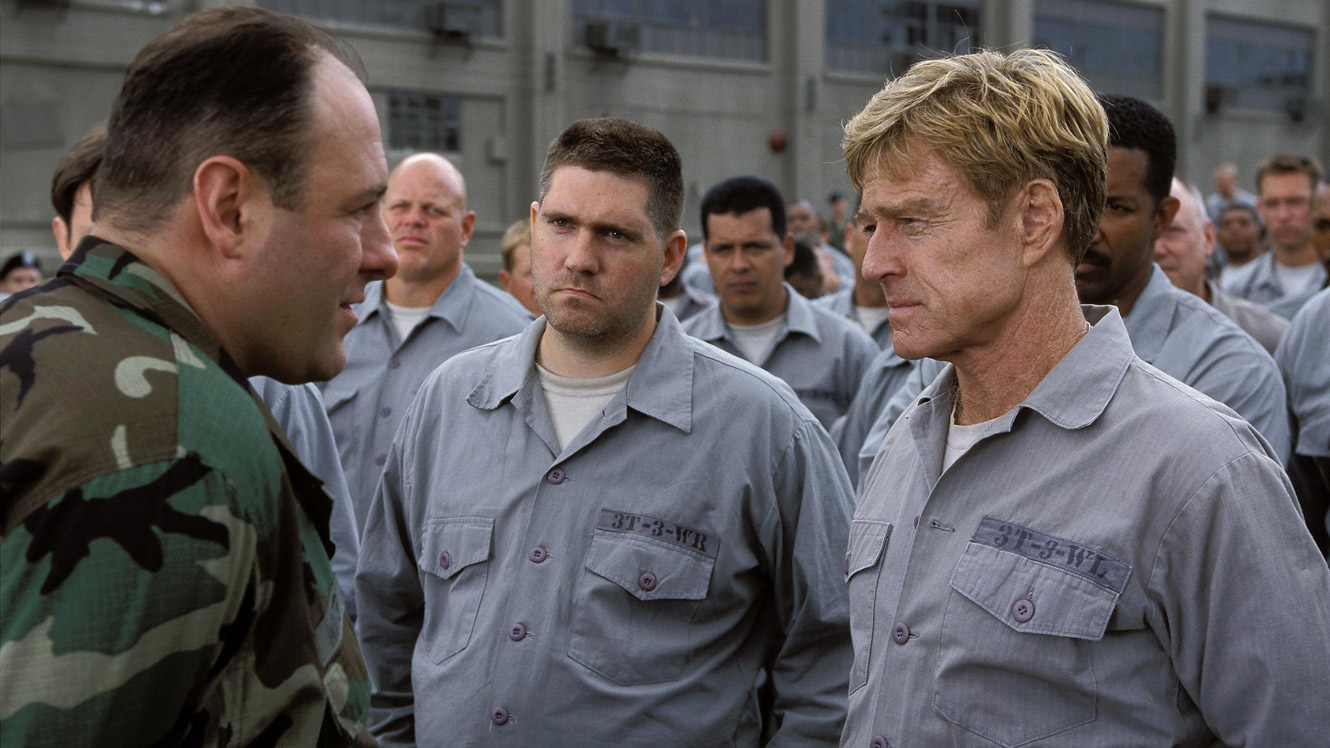
“Hefty star power is wasted in this overheated drama … The considerable talents of Robert Redford, James Gandolfini, Mark Ruffalo and Delroy Lindo go untapped.”
– Claudia Puig, USA Today
Robert Redford is one of those reliable stars that has rarely ever made a bad film. Surely not all of them are as effective as when he buddied up with Paul Newman in classics like “The Sting” and “Butch Cassidy and The Sundance Kid”, and not all of them hit the mark as they should have, but for the last decade or so, every one of his films have had some merit.
However, his 2001 prison-drama “The Last Castle” was met with several unfavorable reviews, not to mention the fact that it flopped hard, which admittedly has mostly to do with the unfortunate timing of its release. Critics cited its overbearing patriotism, implausible script, and even the miscasting of James Gandolfini as the main antagonist.
There are certainly some problems with the script; the uprising against the prison seems just a tad too easy. Its patriotism is very on the nose (though this was during a very difficult time in the United States, something that should not be ignored), and the acting, especially the battle between main characters General Irwin (Redford) and Col. Winters (Gandolfini), does make for some compelling drama.
Irwin has been sentenced to 10 years in a maximum security prison for violating a presidential order that caused the deaths of eight soldiers. The soldier is rather infamous in military circles, and prison warden Winters takes an interest in him and tries to befriend him. When Irwin is sent to his chambers and criticizes his lack of combat experience, Winters starts to resent him.
It does not help that Irwin becomes highly respected among his fellow prisoners and starts to rebel against some of the savage practices that Winters uses to maintain order. When one of the prisoners accidentally dies by Winter’s order, however, Irwin wants justice, demanding Winter’s resignation. When Winters refuses this, Irwin starts a massive uprising.
However over-the-top the eventual action scenes may get, director Rod Lurie does manage to infuse excitement and even tension during the proceedings. Ultimately, however, it’s the late great James Gandolfini (fresh from having filmed the third season of “The Sopranos”) who really makes this film work.
While Redford is his reliable self, a great presence imbued with humbleness and dignity but with that human touch that doesn’t make him seem alien (like Kevin Costner or Tom Cruise), it’s Gandolfini’s turn as the sad pathetic warden desperate for respect that impresses the most.
He’s one of those guys in the schoolyard who could never play with the big boys, and had somehow found his way on the top. He doesn’t deserve the stripes on his shoulder and deep down he knows that, but it’s his position that defines his personality and he can’t bear to lose it.
In the script, he’s the obvious villain, but on screen (and this is a testament to the greatness of Gandolfini), he’s painfully human. A truly fascinating character that could have been such a cliche were it not for Gandolfini, a beautiful man that left the world of cinema and television – and naturally his friends and loved ones – far too soon.